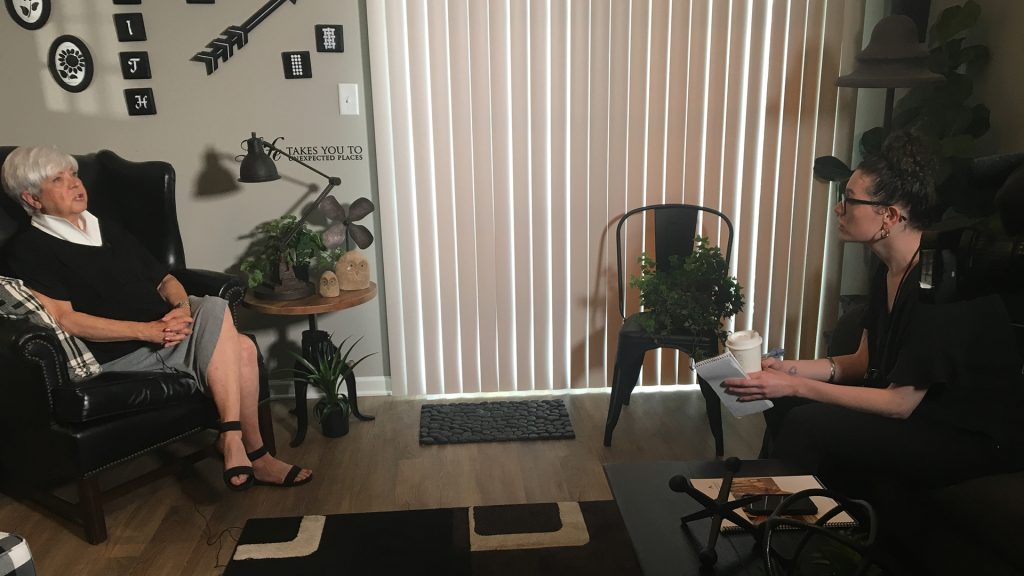
Camalot Todd was leaving Las Vegas — and leaving one desert for another.
Back in late spring, the 25-year-old reporter for the Las Vegas Sun got into her car and drove across the country to work in a new medium — television news — for a boss she’d never met.
Her destination — Buffalo, New York. You may not think of that as a desert, but Todd is part of Report for America, a public service program that since last year has been watering so-called “news deserts” by recruiting talented young reporters, subsidizing their salaries, and sending them around the country to under-served regions and under-represented beats.
Camalot Todd’s new beat is covering mental health issues for Spectrum News Buffalo, a 24/7 regional cable news channel owned by Charter Communications. “I got involved with journalism because I truly believe that journalists are the storytellers of communities today,” says Todd. “Regardless of where you are, if you don’t have a journalist in your small town, or your big city, telling the stories of the people in your neighborhood, those stories go unreported. And you kind of lose a sense of community because of that.”

Of the 61 Report for America reporters now in the field, Todd is the first and only one in a television news shop, but RFA president and co-founder Steve Waldman hopes that will change: “We want local TV to participate in this.”
The nonprofit organization, backed by prominent funders like the Knight Foundation (which also underwrites our work), Google, Facebook, and many others, plans to expand its corps to 250 reporters by next June and has put out a call for news organizations who might want the help — local TV newsrooms included. Waldman says news directors should ask themselves, “What’s the specific gap in your reporting, and how would you use a Report for America reporter to fill that gap?”

Here’s how it works. RFA pays for half the reporter’s salary for a year, up to $20,000, and provides additional training and support. The host newsroom is expected to pay and/or raise the rest. If the reporter and the newsroom renew for a second year, the news organization kicks in a bigger share of the money. Interested news operations have until September 30 to apply for the program’s competitive selection process, say what sort of journalist they’re looking for, and commit to a specific under-served topic or territory. After that, RFA recruits its new reporter corps and gives each winning newsroom several candidates from whom to choose. Once RFA completes the matching process, the newsroom has complete editorial control.
Todd’s new boss, Spectrum News Buffalo news director Kelly Holland, heard about the program from an executive in her company and decided to give it a shot, knowing she was taking a risk. “When I hire for TV, I’m looking at people who have reels that can show me their on-air work. And I was given seven or eight applicants that had never been on TV before.” But after reading Todd’s print work and reaching her by phone from the back of a taxi cab, Holland decided to gamble on the young reporter from Las Vegas. “What really came across was her passion and dedication to reporting on such a sensitive subject as mental health. I needed to bring her on.”
Holland and Todd are betting that a commitment to long-form enterprise reporting on a critical but under-covered issue like mental health will help set their newsroom apart in a tough news town. “It’s the first time we’ve had a reporter who’s not focused on day turn pieces and can take the time to really dig into these topics and tell these stories,” says Holland. “Report for America gives young journalists an opportunity to have a beat,” says Todd. “And that’s beneficial to the news stations, and it’s also beneficial to the community.” But Todd acknowledges that not every shop can provide the strong support she’s received from her new colleagues. “Newsrooms are strapped nowadays as far as having the resources to take somebody that is a print-based reporter and help translate their journalism skills to TV.”
Should your newsroom consider applying for an RFA journalist, even if you’re in a larger market? “Report for America is a way for you to increase your depth around critical topics and communities in a way that you’d probably like to do but can’t,” says co-founder Waldman. “It’s not about population density. It’s about whether there are journalistic gaps.” Maybe they should be called beat deserts.
“There are news deserts where there is no news media, but there are also news deserts where there’s no coverage, no investigative reporting, no long-form reporting,” says Todd. “And that’s just as vital to a healthy and informed community. The quality of work is as important as the quantity.”
Todd has now made her television reporting debut with a multi-part series called “I’m 1 in 5” (based on the number of people in the population with mental health issues). Her boss Kelly Holland hopes Todd falls in love with the job and the Western New York area “before we have our six months of winter.”
And in a line that may resonate with any station considering this form of innovation, Holland added: “A place like Buffalo could use a Camalot.”
Get the Lab Report: The most important stories delivered to your inbox